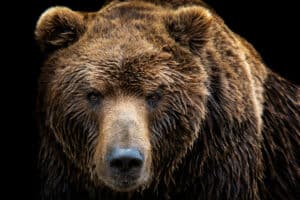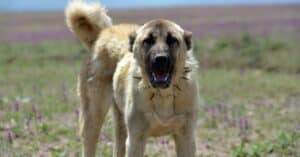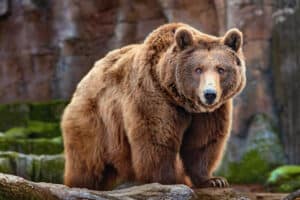Because they live in groups, wolves are very social creatures. The size and quantity of prey will vary across the globe, affecting pack size. In Yellowstone, packs typically contain about 12 members. With elder members, typically the alpha male and alpha female, and subordinates, the pack is a complicated social family with distinct personality traits and duties within the pack.
Packs wail and mark their pee with scent to keep other packs from invading their area. Yellowstone National Park is home to a wide variety of wild animals, and many of them don’t get along. A video from tourists shows exactly what happens when one creature invades a wolf’s territory uninvited.
Watch the Wolf Pack in Action!
A beautiful, lone grizzly bear was foraging at the far end of a valley. Although they typically feed at dawn and sunset, bears can be seen foraging throughout the day. Grizzly bears eat thistle, biscuitroot, fireweed, army cutworm moths, grasses and sedges, dandelion, clover, spring beauty, whitebark pine nuts, horsetail, and ants from June through August.
Fish, particularly salmon, vermin like ground squirrels, carrion, and animals with hooves like moose, elk, caribou, and deer can all be prey items for grizzly bears while they are on the prowl.
In the footage of this particular bear, we see it stand on its hind legs as two wolves appear from the edge of the grass. Bears are better able to see, hear, and smell while they are standing up than when they are on all fours. In order to see what is in front of them, they just stand up on two legs, just like humans.
Power in Numbers
The two wolves are trying to lead the grizzly out of their territory. Before the grizzly can react, more wolves come from every direction and create a circle around the bear. This keeps the wolves as the dominant animal in the situation, even against a several hundred-pound grizzly.
All of the animals start running toward the other edge of the valley. It’s interesting to see the two species interact without hurting each other. The wolves are simply telling the bear that he entered their space and now it’s time to leave.
A person in the video can be heard asking whether or not a pack this size could successfully take on a bear. It’s reported that six to seven grey wolves are needed to take down a large bear, and this pack has plenty to spare.
Thankfully, all of the animals safely made it to the woods and parted ways. A comment on the footage makes a good point. They mention, “If you notice at the end of the video, there was one wolf that was leading the pack, to have them guide the bear in a certain direction, they’re both highly intelligent creatures!”
The photo featured at the top of this post is © David Dirga/Shutterstock.com
Thank you for reading! Have some feedback for us? Contact the AZ Animals editorial team.






